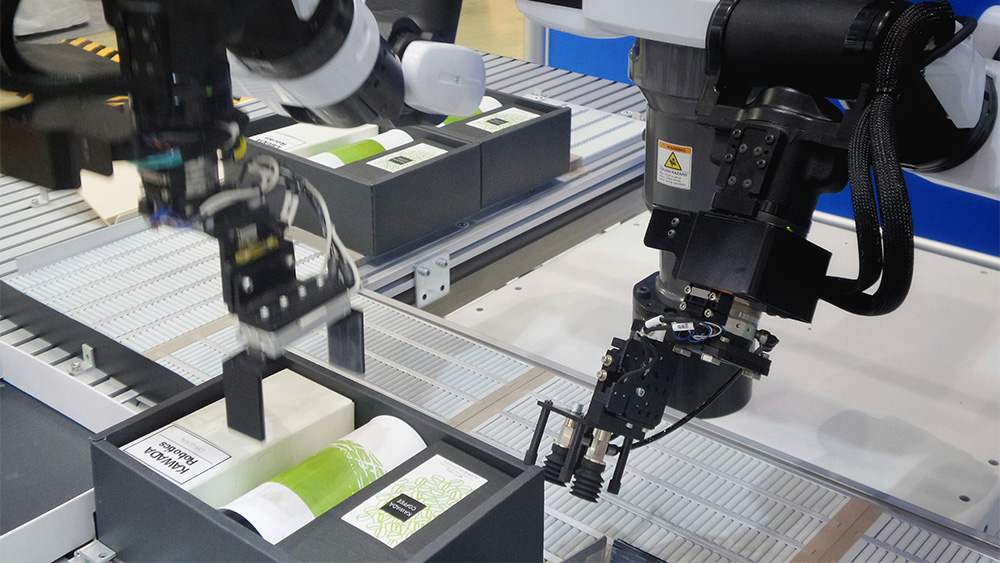
Dual cobots working on an assembly line, meticulously placing and aligning products in packaging boxes. Their integration helps streamline material handling tasks, enhancing accuracy and reducing the need for manual intervention.
In the process of aerosol filling, precision and safety are crucial, given the complex nature of handling pressurized products and ensuring quality control at every stage. Traditionally, robots have been employed to automate several parts of production. But the introduction of collaborative robots (cobots) has significantly enhanced both safety and efficiency in aerosol filling machines.
|
ADVERTISEMENT |
These next-generation machines are reshaping the aerosol-filling industry by offering a more flexible, precise approach to ensuring consistent product quality. Cobots used for this process generally are compact and often modular, designed to fit within tight spaces on the production line. They typically handle specific tasks like material movement, inspection, and filling with high precision. Many are gantry or tabletop-mounted with adaptive grippers, focusing on repetitive tasks that improve quality and efficiency, rather than broader assembly function.
…
Add new comment